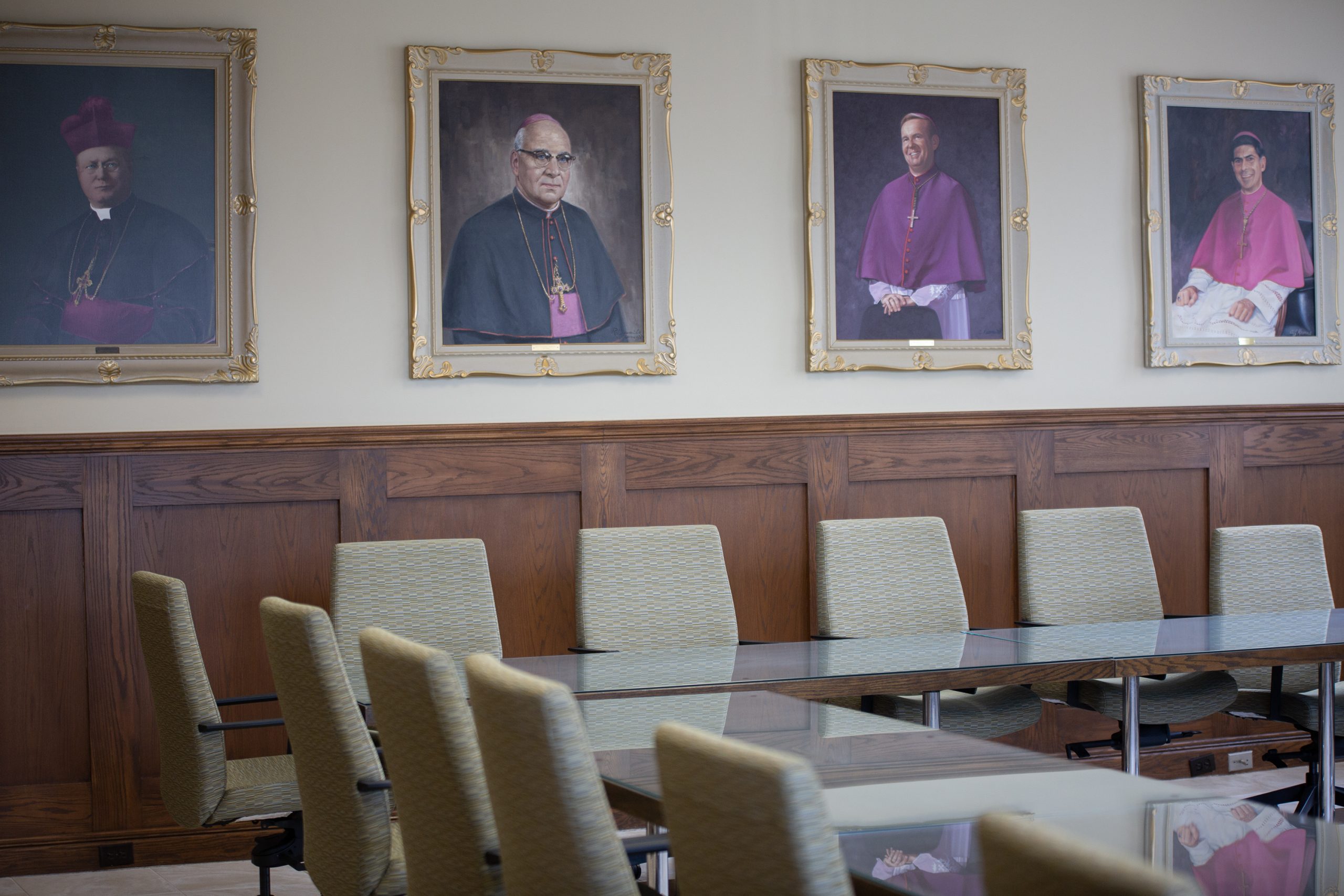
Bishops
Click on the links below to learn more about the Bishops who have served the Diocese of Hamilton.
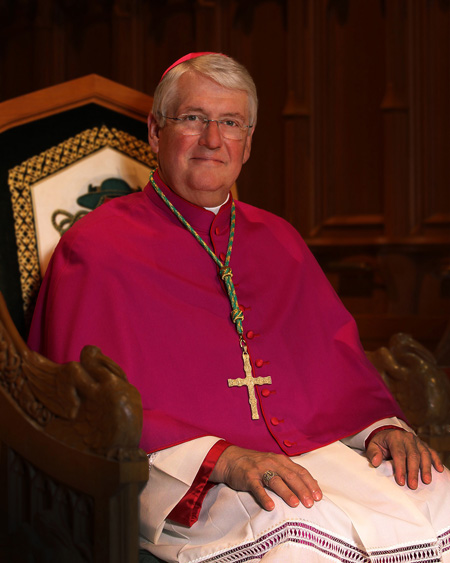
Credit: Bochsler Studios Photography
Bishop Douglas Crosby, O.M.I. is the ninth bishop of the Diocese of Hamilton. He was born on 28 June 1949 in Marathon, Ontario. He entered the Oblates of Mary Immaculate in 1968, making first profession in 1969, and final profession in 1973. He graduated from Carleton University (St. Patrick’s College) in Ottawa in 1972 and holds a B.A. in Philosophy and French. He completed his Bachelor of Theology at St. Paul University in 1975 and his Master’s in Pastoral Studies (Counselling) in 1976. Bishop Crosby was ordained a priest on 27 September 1975. He was appointed assistant pastor of the Co-Cathedral of Our Lady of Perpetual Help in Labrador City, where he remained from 1976–81.
He also served as vocation director, coordinator of provincial services, Pastor of St. Joseph’s Parish, and Provincial Superior of St. Peter’s Province of the Oblates of Mary Immaculate. As Provincial, he was elected President of the Oblate Conference of Canada. In addition Bishop Crosby has acted as Director of the CCCB Missions Office and as the English-language General Secretary of the Canadian Conference of Catholic Bishops. He was appointed bishop on 4 November 1997. His Episcopal ordination was held on January 2, 1998 at St. Joseph’s Parish in Ottawa, and his installation was at the Cathedral in Labrador City on 4 January 1998; feast of the Epiphany. On 6 August 2003 Bishop Douglas Crosby was appointed Bishop of St. George’s Corner Brook, Newfoundland and Labrador. On 8 November 2010 Bishop Crosby was installed as the Bishop of the Diocese of Hamilton.
1984 - 2010
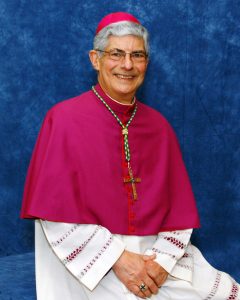
Credit: Mike Perron
Bishop Anthony Frederick Tonnos, D.D. was the eighth Bishop of the Diocese of Hamilton. He was born in Port Colborne, Ontario in 1935, to devout Catholic parents of Lebanese descent. He attended St. Michael's College in Toronto before completing his theological formation at St. Augustine's Seminary. He was ordained a priest for service to the Diocese of St. Catherines on 27 May 1961 by the Most Reverend Thomas McCarthy, D.D. He completed post-graduate studies in Rome at the University of St. Thomas graduating with a Licentiate in Canon Law. He was a member of the Toronto Regional Matrimonial Tribunal for two years. Bishop Tonnos then returned to the Diocese of St. Catherines to serve with distinction both as Chancellor and parish priest. His service to the Diocese of Hamilton began on 12 July 1983 when he was ordained as an Auxiliary Bishop. Following the death of Bishop Reding on 8 December 1983, Bishop Tonnos was appointed Diocesan Administrator. On 18 June 1984 he was installed as Bishop of the Diocese of Hamilton. In 1996 Bishop Tonnos became President of the Ontario Conference of Catholic Bishops. He also acted as head of the Commission on Religious Education for the Canadian Conference of Catholic Bishops. In this role he expended great effort in opposing the Government of Newfoundland's annex of Catholic schools. In his role as President of the Catholic Health Association of Ontario, he also intervened to prevent the closure of hospitals. Several new churches were constructed under Bishop Tonnos' episcopacy. He led the Diocese of Hamilton with a genuine care for priests and young people, as well as with a profound regard for married couples. On 24 September 2010 Bishop Anthony Tonnos retired.
1973 - 1983
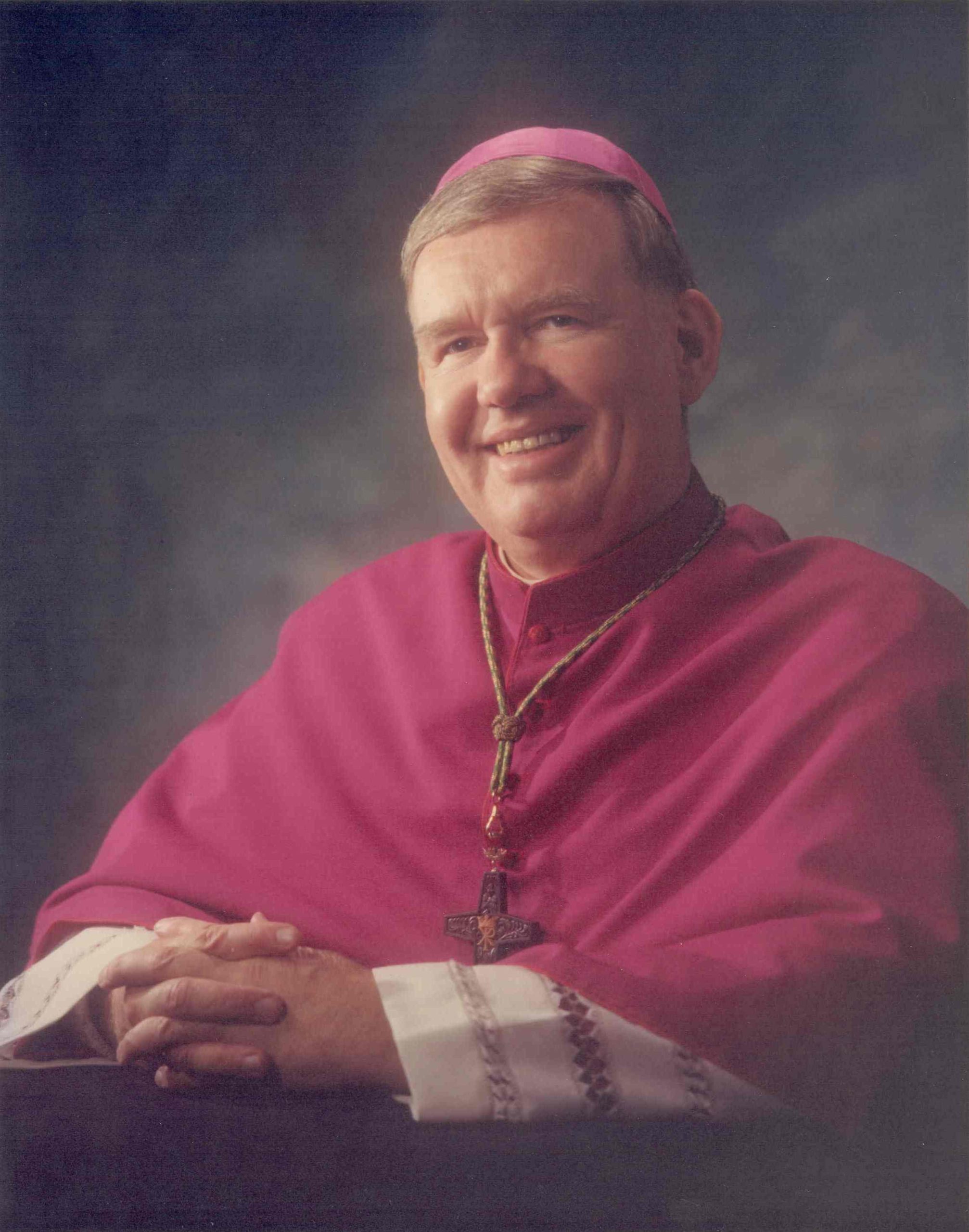
Credit: Rader-Lopez Photography
Bishop Paul F. Reding was the seventh Bishop for the Diocese of Hamilton. He was born in Hamilton on 14 February 1925. He attended St. Ann's Separate School and Cathedral Boys' High School in Hamilton and went on to St. Augustine's Seminary in Toronto. He was ordained to the priesthood in 1950. In 1952 he was appointed Secretary to Bishop Ryan and in 1955 he became Chancellor for the Diocese of Hamilton. He was appointed Auxiliary Bishop in 1966 and succeeded Bishop Ryan as Ordinary in 1973. Bishop Reding was noted for being a skilled administrator; he initiated several changes to the functioning of the diocese including de-centralizing administration, making greater usage of deans, and ensuring that all lay employees received fair wages and benefits. He was a committed member of the Canadian Conference of Catholic Bishops, acting as treasurer and vice-president in 1981. That same year Bishop Reding oversaw the 125th anniversary of the Diocese of Hamilton. In 1983 Bishop Reding passed due to cancer at the age of 58.
1937 - 1973

Credit: Bochsler Studios Photography
Bishop Joseph F. Ryan was the sixth Bishop of the Diocese of Hamilton. He was a "true son of the diocese", having been born and raised within the Hamilton area. He was born in Dundas, Ontario on 1 March 1897, raised in St. Mary's Parish, Hamilton, and educated at St. Jerome's College in Waterloo. After theological studies at St. Augustine's Seminary in Toronto he was ordained by Bishop Dowling on 21 May 1921, at St. Patrick's Church in Hamilton. He served for five years at his home parish, St. Mary's. In 1926 he was sent to Rome for two years of post-graduate studies in Canon Law. Upon his return to Hamilton he served as the priest at St. Mary’s Hamilton. When the new Cathedral of Christ the King was opened in 1933, Bishop McNally appointed Ryan as its first rector. When Bishop McNally became Archbishop of Halifax in 1937, Pope Pius XI named Joseph Ryan the Bishop of Hamilton. His consecration took place in the Cathedral of Christ the King on 19 October 1937.
The dominant characteristic of Bishop Ryan's long episcopacy was growth. Rapid population growth in Canada during his time as Bishop required him to open more than fifty new parishes, doubling the existing number. Twelve of these were created to serve various ethnic groups that had arrived from eastern and southern Europe. Bishop Reding devoted a considerable amount of time and much of the diocese's resources to promoting Catholic education. He expanded high school education throughout the diocese, created many new elementary schools, and helped to upgrade the status of St. Jerome's College in Waterloo to that of a degree-granting institution. Bishop Ryan possessed a deep love for the Blessed Mother. One manifestation of this devotion was the annual Marian Day Rally, which continued for twenty-five years. Bishop Ryan attended the four sessions of the Second Vatican Council and skilfully guided the diocese through the period of change that followed. Bishop Ryan generously responded to the appeals by Popes John XXIII and Paul VI for North American bishops to assist the Church in Latin America. A diocesan mission was established in Teculutan, Guatemala in 1963. On 27 March 1973 Bishop Ryan submitted his resignation as Bishop of Hamilton. He died on 22 March 1990.
1924 - 1937
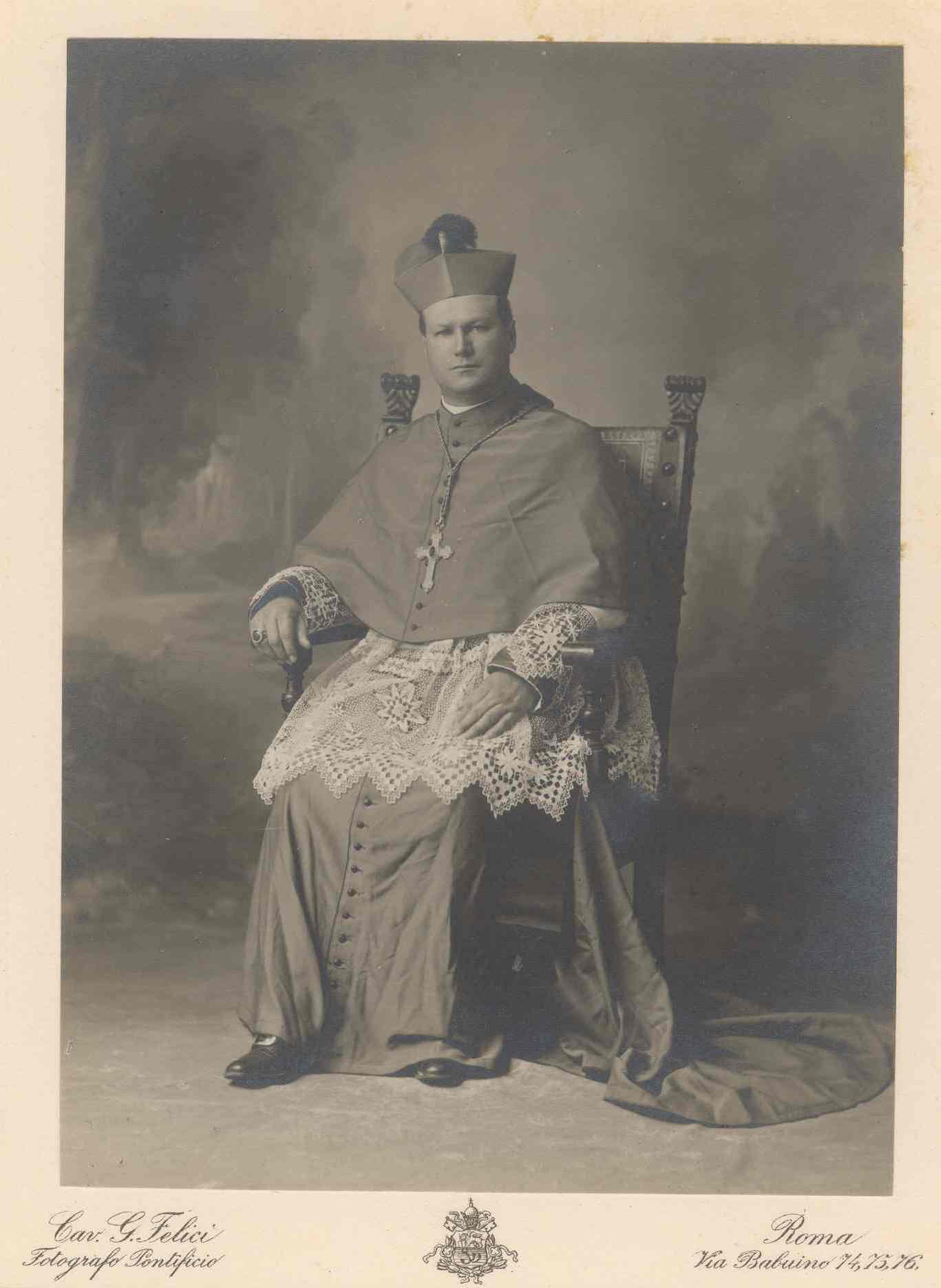
Bishop John T. McNally was the fifth bishop of the Diocese of Hamilton. He was born in Prince Edward Island on 24 June 1871. Bishop McNally worked as a pastor in the Archdiocese of Ottawa and served for approximately three years as secretary and Chancellor to Archbishop Christie of Portland, Oregon. He also spent two periods of theological study in Rome. In 1913 a new diocese was formed in Calgary, Alberta and Rev. John McNally was named to head it. During these years Bishop McNally formed a warm relationship with fellow Maritimer, Richard Bedford Bennett, who became Prime Minister of Canada in 1930. In September 1924, Bishop McNally was transferred to the Hamilton Diocese. His installation took place in St. Mary's Cathedral on 26 November 1924. His episcopacy coincided with a time of relative peace between World War I and World War II.
There were fewer immigrants during this period and thus there was less need to establish new parishes. Bishop McNally was able to devote his energies instead to the building of a new cathedral. McNally was responsible for the construction of the Cathedral of Christ the King, which remains to be the cathedral for the diocese. In 1927, Bishop McNally transferred the cathedral from St. Mary's to the prominently located St. Patrick's Church. This was a temporary move, lasting until 1933 when the new cathedral was complete. St. Mary's and St. Patrick's were given the title of Pro-Cathedral or former cathedral. During Bishop McNally's thirteen year term, eight new parishes were formed in the diocese and several Catholic schools were opened. The Loretto Academy and Cathedral Boy's High School, both in Hamilton, also received improved accommodations. In 1937, Bishop McNally was named the Archbishop of Halifax, an office he held until his death on 18 November 1952.
1889 - 1924
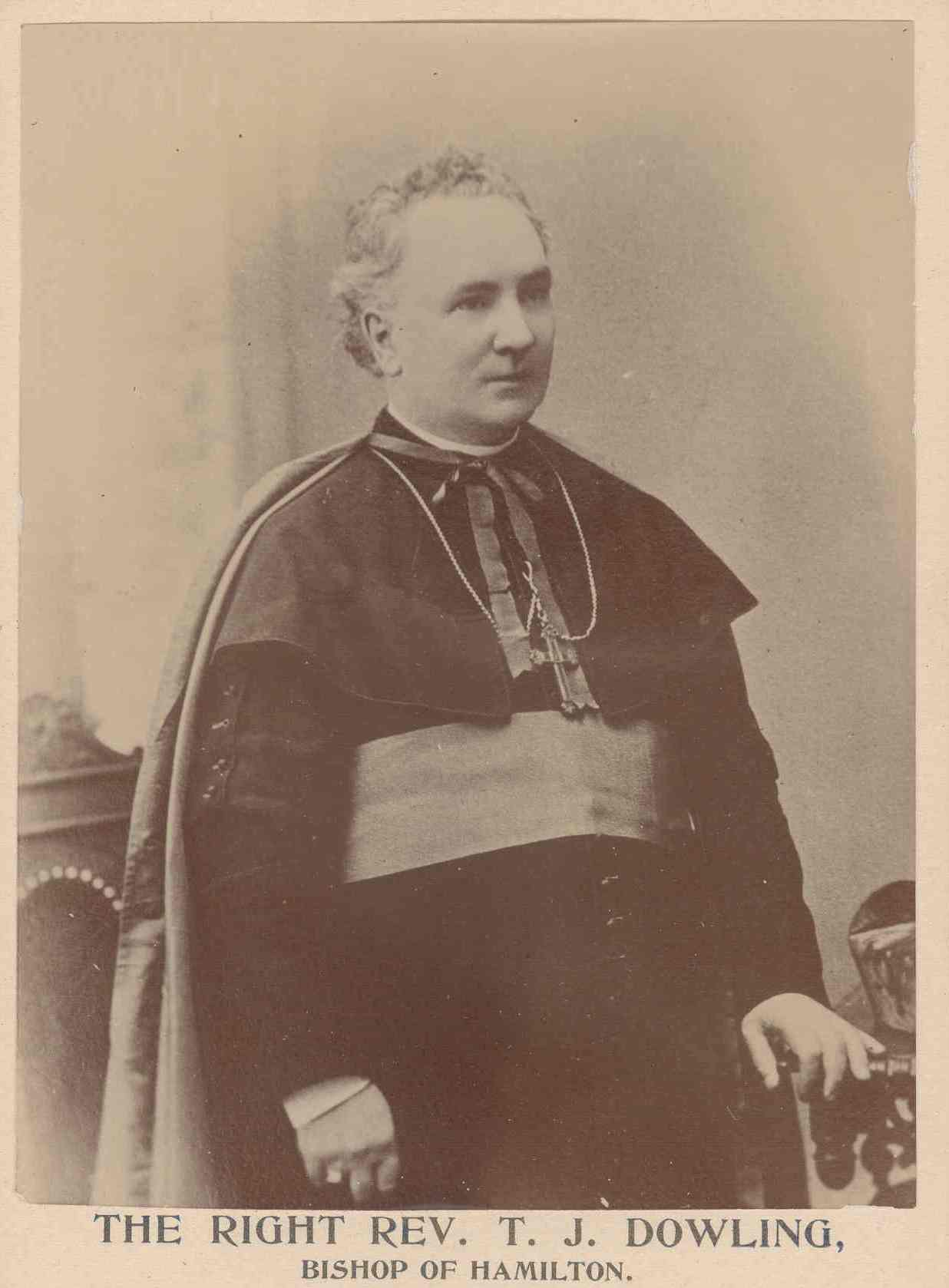
Bishop Thomas J. Dowling was the fourth Bishop of the Diocese of Hamilton. He was born in County Limerick, Ireland on 28 February 1840. He moved to Canada when he was eleven and was raised within the Hamilton diocese. He attended St. Michael's College in Toronto where he acquired a reputation as a debater and public speaker. Following graduation he remained at the school as a teacher before going to the Grand Seminary in Montreal. After his ordination in 1864, he was sent to Sacred Heart Parish in Paris, Ontario where he served as pastor for more than twenty years. In 1887 he was appointed Bishop of Peterborough.
Two years later he left Peterborough to become Bishop of Hamilton. During Bishop Dowling's episcopacy there was a heavy influx of immigrants into Canada. This increase in population necessitated the opening of more than twenty new parishes and the construction of many new churches and schools. Bishop Dowling strove to serve new Canadians in their native language by bringing priests into the diocese with the same ethnic background. Bishop Dowling was also committed to health care. He donated a residence to the Sisters of St. Joseph for their service to the sick.
Catholic education was furthermore a continuing concern for Dowling. He fought resistance to separate schools in rural areas and established several Catholic high schools in Hamilton. In May 1906 Bishop Dowling led a three-day celebration to mark the Golden Jubilee Anniversary of the diocese. The Honourable Thomas Dowling died on 6 August 1924 and was laid to rest in Holy Sepulchre Cemetery in Burlington
1884 - 1887
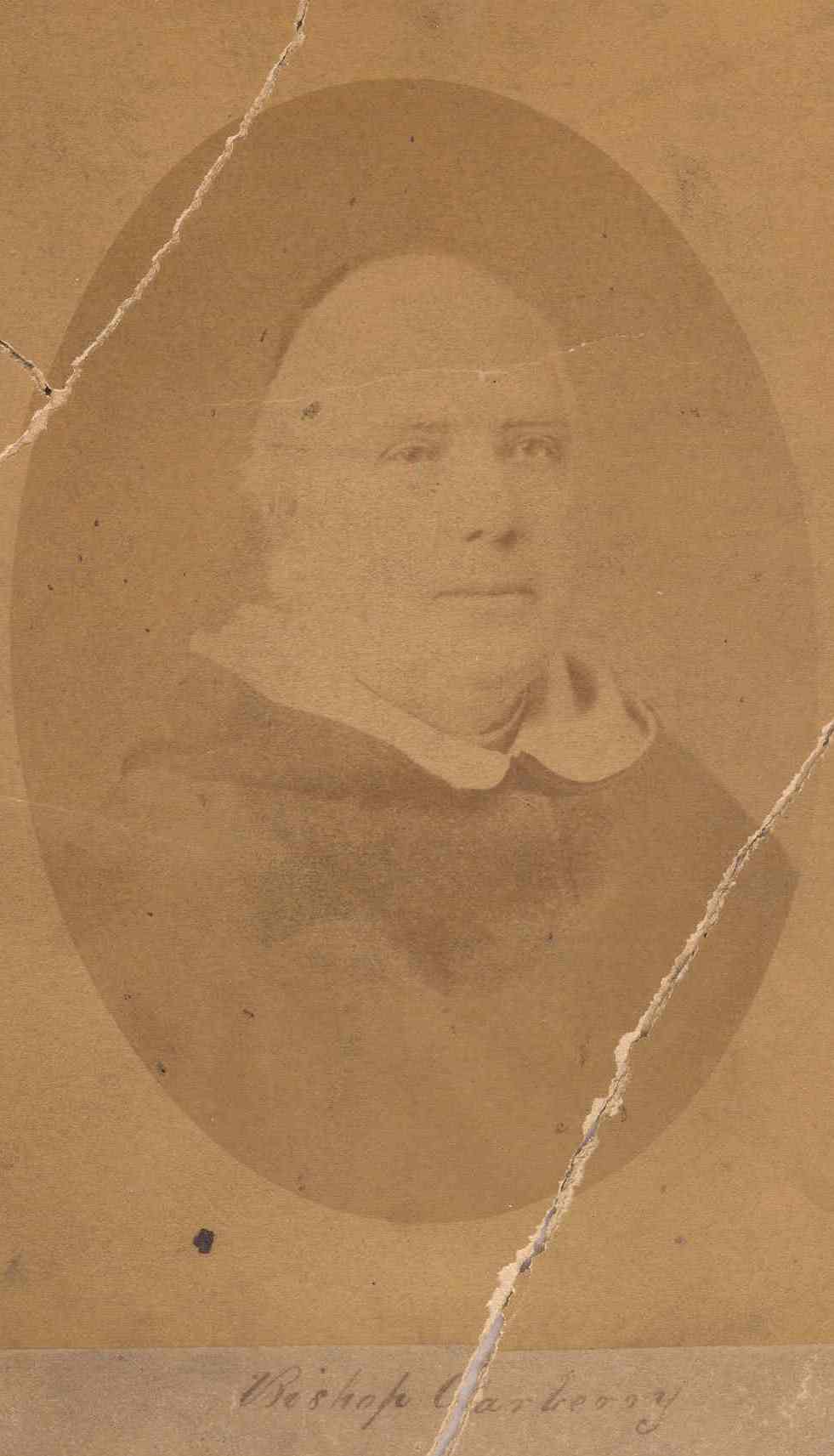
Bishop James Carbery, O.P. was the third Bishop for the Diocese of Hamilton. He was born in Mullingar, Ireland on 30 April 1823. He entered the Order of Preachers, the Dominicans and was ordained in 1846. In 1880, the General of his Order summoned him to Rome to become a member of the governing Council of the Dominicans. On 4 September 1883 he was appointed to the vacant See of Hamilton. Archbishop Lynch of Toronto installed him as chief pastor of the Diocese of Hamilton on 3 April 1884. Bishop Carbery was a methodical man and maintained detailed records of his activities. He appointed a diocesan archivist and also encouraged every parish to keep archives of its own activities. In September 1885 Bishop Carbery brought together the clergy of the diocese for two days. The diocesan clergy met in St. Mary's Cathedral to discuss pastoral matters. This was the first and only Diocesan Synod of Priests. It was followed by a number of theological conferences, centred on topics such as the administration of the Sacrament of Penance and Church rules concerning marriage. Bishop Carbery sought through these meetings to ensure the efficient functioning of the diocese. During Bishop Carbery's tenure new churches were opened in New Hamburg, Oustic, North Brant, Southampton, and Formosa. He also introduced the league of the Sacred. In 1887, due to poor health, Bishop Carbery left for home to recuperate. On December 17th of that year he died in the Dominican monastery at Cork.
1874 - 1882
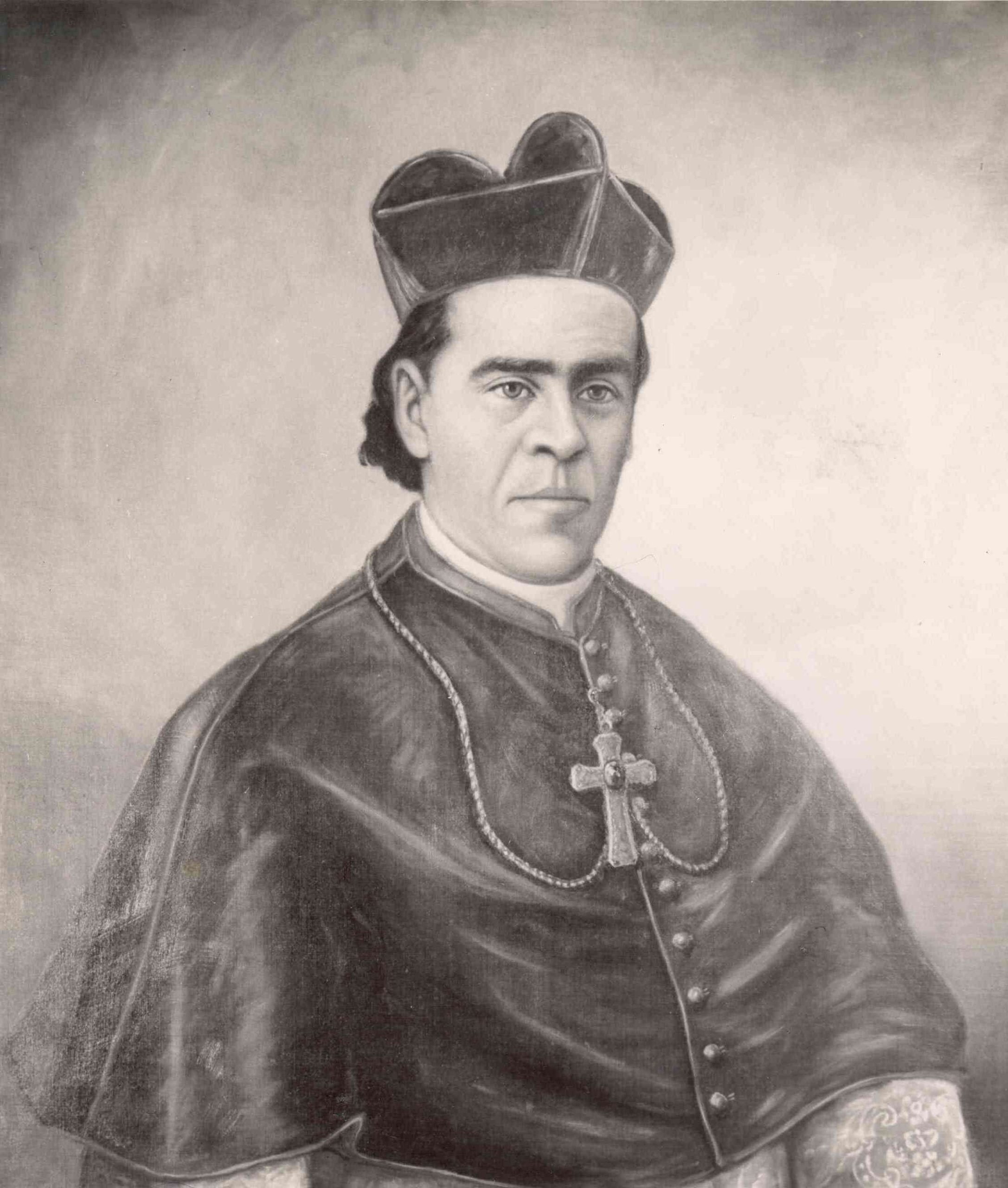
Bishop Peter F. Crinnon was the second Bishop for the Diocese of Hamilton. He was born in County Louth, Ireland in 1818 and moved to Canada in 1850. He served in the London, Ontario area for several years including sixteen years as pastor in Stratford. It was in Stratford's St. Joseph's Church that he was consecrated Bishop, on 19 April 1874. During his tenure Bishop Crinnon created eight new parishes and saw to the construction of fourteen new churches; six of which replaced older structures that were no longer suitable. Several separate schools were erected and St. Jerome's College in Waterloo was enlarged. Bishop Crinnon also sought to recruit much needed new priests to help attend to the extensive diocesan territory. He returned to Ireland and persuaded approximately twenty young clerical students to immigrate to Canada to continue their training. Many of these young men were eventually ordained to the service of the diocese. Bishop Crinnon was often ill during his time as Bishop for the Diocese of Hamilton. In November of 1882 he left on vacation to Florida in hopes of restoring his health. He died in Jacksonville on November 25th. His body was returned to Hamilton where it lies beside his predecessor in the vault beneath St Mary's Church
1856 - 1873
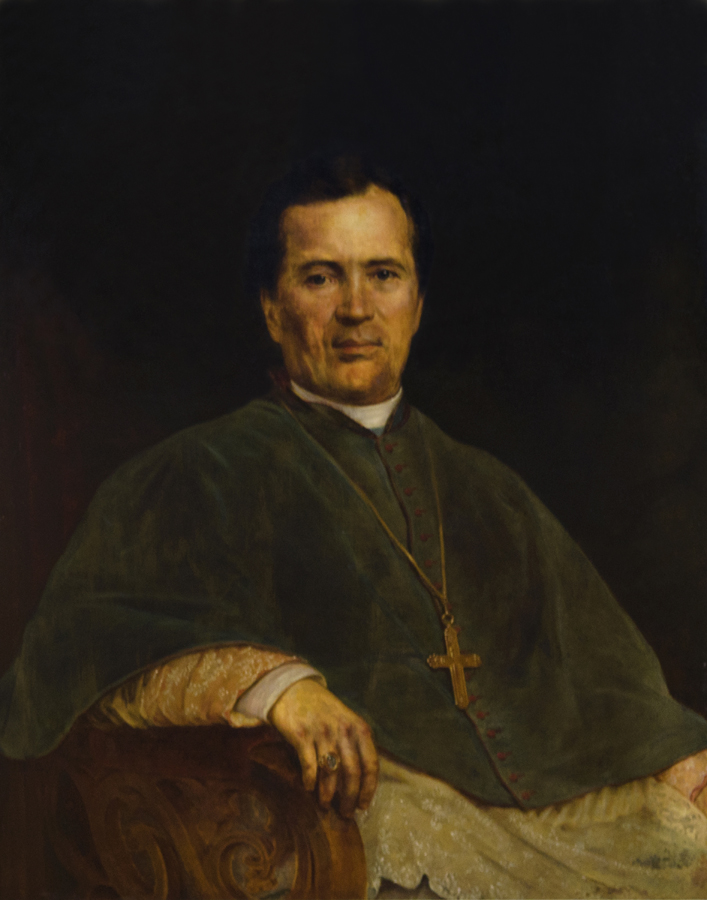
Credit: Mike Perron
Bishop John Farrell was the first Bishop of the Diocese of Hamilton. He was of Irish descent, born in Armagh, on 2 June 1820. His family moved to Canada in 1832 and settled in Kingston, Ontario. Following his ordination in October 1845, he served briefly in Kingston, teaching at Regiopolis College. In 1853 he was appointed pastor of Peterborough. Three years later he was named as the first bishop of the newly formed Diocese of Hamilton. He was consecrated bishop in Kingston on 11 May 1856 and shortly afterwards installed as the Bishop of Hamilton. Bishop Farrell was dedicated to establishing a solid separate Catholic school system. By the end of his seventeen year tenure as Bishop, twenty-six separate schools were functioning within the diocese. Bishop Farrell also encouraged the founding of what has become St. Jerome's University in Kitchener-Waterloo. The Honourable John Farrell's role as Bishop of the Diocese of Hamilton was cut short in 1873, when at the age of 53 he succumbed to peritonitis. He was laid to rest in a vault beneath his cathedral, St. Mary's Church in Hamilton.
Contact
Dominy Williams
Director
905-528-7988 Ext. 2252
Send Email
Anne Lamanes
Archival Assistant
905-528-7988 Ext. 2270
Send Email
